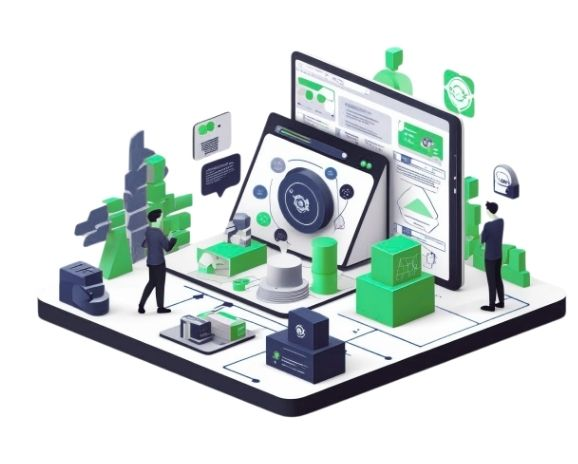Feature Friday – The Best Way to Enhance Your Manual Testing Methods With Qyrus
Doing things manually can be meticulous and time-consuming. Manual testing requires a human interface where people are in control of tests and reporting. This can be problematic in some ways, including limiting the organization of tests, limiting test coverage, and costing a high amount of resources. However, what if we could tell you that Qyrus has a way to enhance your manual testing methods? Joining us this week are Jorell, Tim, and Linto to tell us more about the manual testing opportunities through Qyrus.
Tell us more about manual testing through Qyrus.
Jorell:
Although Qyrus is an automated testing platform, we do offer some simple manual testing to be done, as well. This can be done through our Device and Browser Farms in which we allow users to connect to devices such as Android or iOS mobile phones and tablets.
Tim:
For mobile devices, users can add their app to the device through Qyrus or download it from the App Store or Play Store. Screenshots and video playback of the manual test are also provided once the manual test is finished.
Linto:
And besides that, you can throttle the internet and configure the connection. For example, on a mobile device, you can switch between 5G, LTE, and even Wi-Fi networks of different speeds. Even using the physical hardware on the device isn’t out of the question, enabling users to manually turn up and down the volume, lock and unlock devices, or use the camera app.
How can manual testing on Qyrus have an impact on the testing process?
Linto:
Well, to start off, it expands the usefulness that Qyrus provides beyond just automated testing. This can be a starting point or a bridge for mostly manual testing teams to start the transition to becoming more automated.
Tim:
But next, we also have the reporting aspect. As mentioned before, a complete recording of your session is kept, along with any screenshots you might take. But it doesn’t just stop there. There are analytics and hardware metrics captured from the device during the session. This includes power consumption, CPU, RAM, network usage, and much more.
Now you might see how all of this can be helpful, especially if it stores it all for you in one convenient place. Our reporting capabilities are extraordinary, and you can share reports across your organization and through email. Read more here about our collaborative efforts at Qyrus here and here.
How might manual testing on Qyrus help testers, developers, and business technologists? What value can this feature bring?
Linto:
Testers are able to run quick manual tests on their applications, and developers also have that same access. Developers might find use in it to quickly check their applications, how they are working, and how they are performing on different devices. It might be more based on unit testing.
Tim:
Business technologists could also perform simple manual tests, allowing them to capture the necessary data themselves. Remember, everything on Qyrus has no code or low code, and that means Qyrus is more accessible to a larger number of people.
Does the same or similar functionality exist without Qyrus, and how do competitors address similar problems?
Jorell:
Manual testing isn’t something that has a high barrier of entry. If you have a phone and can download an application, you can manually test it yourself on your device. However, that’s just the start of manual testing. To really build up a system capable of capturing a recording of your session, screenshots on demand, as well as simulating different network connections, is something that takes time and a great deal of coding knowledge.
Tim:
On top of that, figuring out how to capture all of those analytics and metrics from the device is not the easiest thing to do. The great thing is that with Qyrus, everything is already set up for you, and requires no setup time afterward from your end. Just an internet connection and a browser are necessary to do manual testing on Qyrus, or any kind of testing on Qyrus for that matter.
How do you see manual testing on Qyrus impacting day-to-day operations across organizations?
Tim:
Well, without the requirement of setting up and maintaining test infrastructure, lots of things usually handled on a day-to-day basis by testers are now picked up by Qyrus and handled by us. It can be a real hassle to maintain infrastructure as well as make sure all devices are working correctly, updates are being made, and much more.
In conclusion, we can see that there are many ways that Qyrus can enhance even your manual testing efforts. By providing better analytic and metric tracking and report capture, testers can save loads of time. And, as mentioned, since Qyrus is an automated testing platform, this provides the best opportunity for those testing teams that want to transition to an automated testing methodology. Thanks for joining us again, and we hope to see you next week to learn more about our amazing features!







